

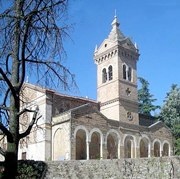
The church was built on the burial site of St Constantius.
A church was first documented here in 1027 as a dependency of the Abbazia di San Pietro. Pope Benedict IX arbitrated in favour of Abbot Bonizone in 1036 when Bishop Andrea tried to interfere in the management San Costanzo.
An inscription on the high altar records that the church was rebuilt by a priest called Alexius in 1205 and re-consecrated. St Constantius became a patron saint of Perugia in 1310.
Bishop Alessandro Odoardi re-discovered the relics of St. Constantius under the high altar in 1781. The interior of the church was remodelled in the following year.
The church was almost completely rebuilt in neo-Romanesque style in 1882-90 by Guglielmo Calderini. The design retained the foundations of the ancient church.
Exterior
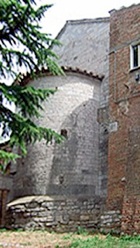
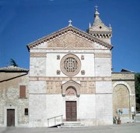
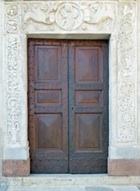
The portico and campanile (seen in the photograph above) are distinctive features of the rebuilding. The bells were installed and blessed in 1889.
Interior
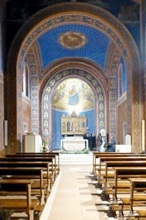
Relics of St Constantius

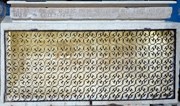
The relics of St Constantius are preserved in a sarcophagus behind the high altar. The inscription above records that the priest Alexius had rebuilt the church, which had been consecrated in 1205.
High Altar
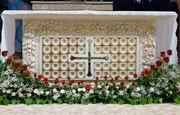
The garland surrounding the altar frontal came from the lid of a Roman sarcophagus that was found under the original high altar in 1781
Frescoes (1889)
The frescoes on the walls of the nave and the apse are by Matteo Tassi.
Frescoes (1890)
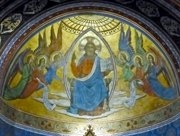
Ludovico Caselli signed the frescoes in vault of the presbytery, which are dated by inscription. They depict:
-
✴Christ in a mandorla held by angels, and
-
✴the Lamb of God.
Altarpieces (1890-1)
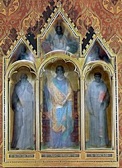
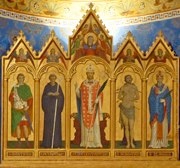
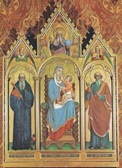
Ludovico Caselli also painted three neo-Gothic altarpieces in the church:
-
✴the polyptych on the high altar, which depicts St Constantius, flanked by SS Martin and Peter Abbot on the left and SS Sebastian and Blaise on the right;
-
✴a triptych on the altar on the left, which depicts Christ enthroned, flanked by SS Antony Abbot and Francis; and
-
✴a triptych on the altar on the right, which depicts the Madonna and Child, flanked by SS Benedict and Joachim.

